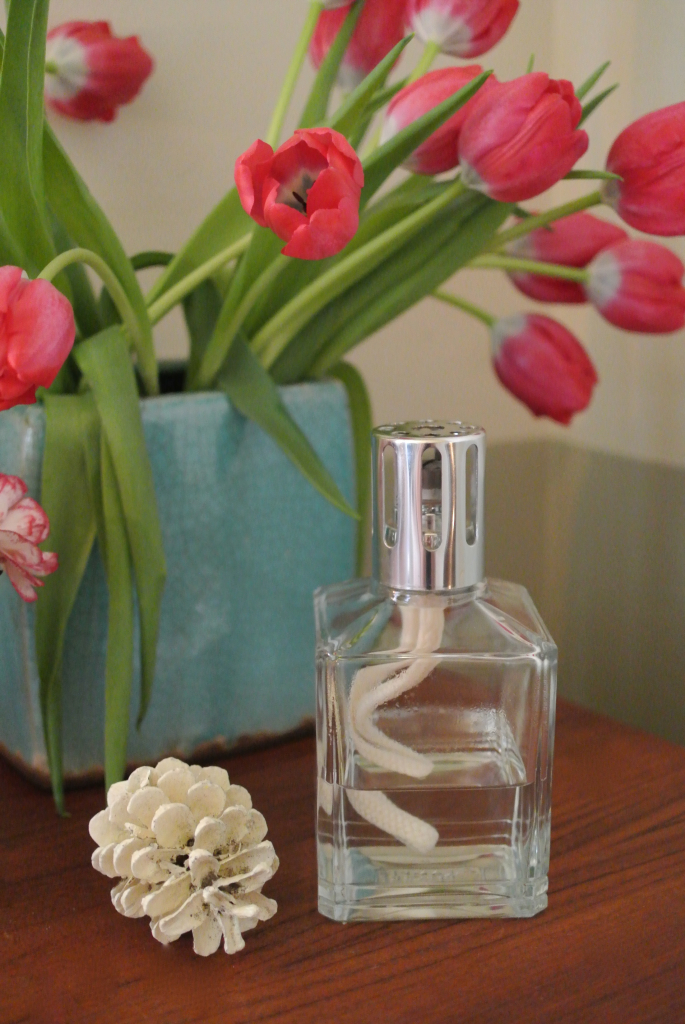Clean the air in your home and make it smell good
Stinky shoes, the odours that linger in the air after cooking fish and unpleasant pet smells unsettle me, and I'm not at ease until they're gone. A home can look good but if it smells bad, what's the point.
Of course it's best to deal with bad odours at the source and get rid of the cause of the offending odour; change the kitty litter, empty the garbage, do a thorough cleaning and open windows to let the fresh air in.
But sometimes we need extra help.
No matter how bad the smell I never reach for conventional air fresheners and odour eliminators. It seems these products cover up smells, mostly with artificial scents, but do little to freshen the air. I feel suspicious of products like Febreeze and Glade, and rightly so: environmental groups repeatedly warn against using many of these air fresheners because most contain toxic chemicals and artificial perfumes such as naphthalene and phenol, and artificial perfumes which can trigger breathing difficulties, headaches and irritate your eyes. They are especially hard on people with allergies and asthma.
So what are healthier and effective alternatives?
An open box of baking soda is a cheap and effective remedy for deodorizing smelly rooms. Although I've never tried it I read a bowl of vinegar placed in room with a stubborn odour can get rid of it completely.
There are other non-toxic options to help our homes smell pleasant on the nose, too. You can make one using citrus peel, cloves and cinnamon, or one that uses green tea. This website has great advice on safe ways to have your home smelling fresh in no time.
My go-to solution to eliminate odours and make our home smell clean and fresh is a little more high tech.
Several years ago, I was introduced to the Lamp Berger, a fragrance lamp that disperses scented oil (isopropyl alcohol combined with essential oils) using a heated stone attached to a cotton wick. The catalytic combustion wick was originally developed in the 19th century by Maurice Berger for use in hospitals and mortuaries. While no longer considered effective for use in hospitals, the lamps remain popular as air fresheners.
The lamps are sold on the premise that the lamp's flame-less, low-temperature catalytic combustion converts odour molecules into harmless substances such as carbon dioxide and water.
First you light the stone burner seated at the mouth of the lamp, let it burn for a couple of minutes and then blow out the flame. The heated burner remains active and diffuses the aromatics throughout the room.
One of the by-products of these fragrance lamps is low-level ozone, which has been attributed to the purification process of the lamps in eliminating odour.
The Lampe Berger is available in a variety of styles, designs and materials, and there are about 50 different scents to choose from. My favourites are lavender and peppermint. There's also a neutral option, one with no scent whatsoever.
Another effective way to improve overall air quality is by burning beeswax candles. With its healthful negative ions beeswax candles act like indoor air purifiers. Pollen, dust, dirt and pollutants carry a positive charge and get suspended in the air. The negative ions released from burning beeswax are said to negate the positive charge of air contaminants and the neutralized ions are sucked back into the burning candle or fall to the ground.
Hundreds of years ago, most candles were made of beeswax. Over the centuries, beeswax was gradually replaced by tallow (animal fat) and, in the last century, by paraffin.
I guess it's not surprising burning paraffin candles releases soot and other toxins and carcinogens considering paraffin is made from the sludge at the bottom of barrels of crude oil, which is then treated and bleached with benzene and other chemical solvents for use in candles.
Beeswax candles are more expensive compared to ones made with paraffin, but they are longer burning than any other candle, including vegetable or soy wax candles. That's because beeswax has a high melting point, the highest among all known waxes, which results in a significantly longer burn time. This offsets their higher cost. They also drip very little, if any at all.
Beeswax burns with a bright, golden halo, exudes a natural aromatic honey essence.
Last but not least, one sure way to improve the quality of air in your home is to have house plants. Not only do they add living beauty to the inside of our homes but indoor plants add oxygen and clear the air of carbon dioxide and other chemicals. Some are better at cleaning the air than others. The good ones include palm plants, snake plants and aloe vera to name only a few.












